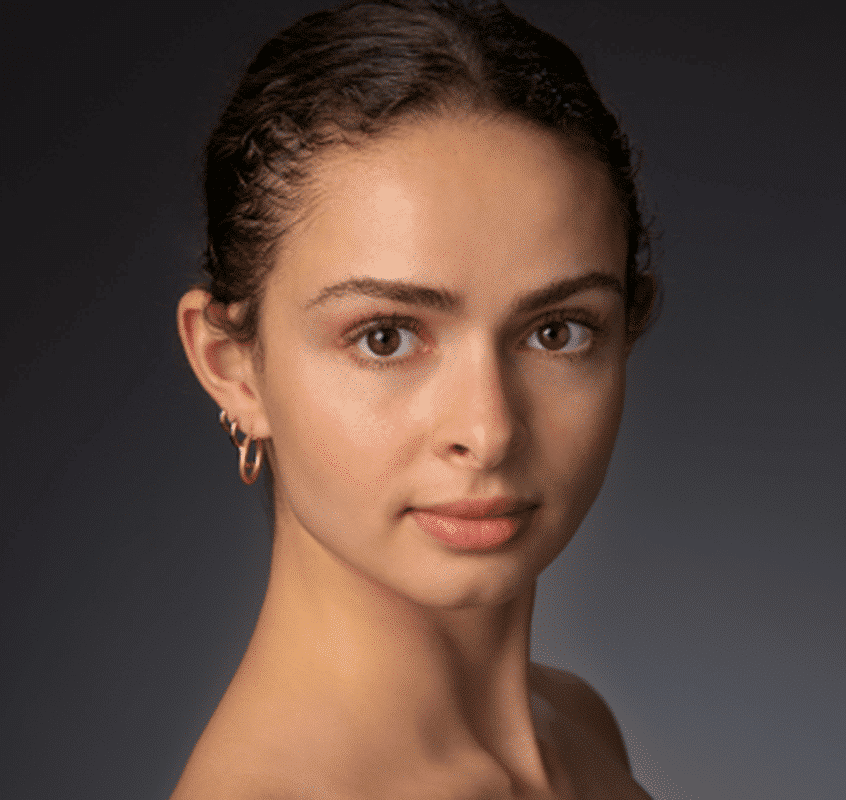
During the coming weeks, we will share thoughts from some of the dancers participating in the Arpino Chicago Centennial Celebration performances. We continue with Paige Russell of Oklahoma City Ballet, which is performing Birthday Variations on the first program.
Paige Russell joined Ballet Austin II in 2017, performing in Stephen Mills’ Romeo & Juliet and The Nutcracker, as well as George Balanchine’s Valse Fantaisie, and Paul Vasterling’s Peter Pan. In 2018, she joined Oklahoma City Ballet’s Studio Company. During that time, she performed Robert Mills’ The Nutcracker, Romeo & Juliet, and The Firebird, as well as George Balanchine’s The Four Temperaments, Michael Pink’s Dracula, Septime Webre’s ALICE (in wonderland), and August Bournonville’s La Sylphide. She was promoted to Apprentice in 2020, then to Corps de Ballet in 2021. Since then, Russell has added Jessica Lang’s To Familiar Spaces in Dream, Nicolo Fonte’s Of Dreams and Dice, and Ryan Jolicoeur-Nye’s The Sleeping Beauty, The Nutcracker, and Cinderella, as well as Val Caniparoli’s Lady of the Camellias, Twyla Tharp’s The Golden Section, Gerald Arpino’s Birthday Variations, and George Balanchine’s Western Symphony to her repertoire.

Paige’s thoughts and reflections:
How long have you been dancing professionally?
I will be going into my seventh season dancing professionally, and it will be my sixth season with Oklahoma City Ballet.
Do you have a favorite choreographer you like to dance?
I wouldn’t say that I have a favorite choreographer in particular because it’s so hard to pick just one! While I was training at the Houston Ballet Academy, I performed numerous ballets by Stanton Welch, and I love the variety of concepts for his pieces. As a professional, I’ve really enjoyed getting to learn works by Val Caniparoli, Gerald Arpino, and Jiří Kylián and would love to do more by them throughout my career!
Is there anything in particular that you found joyful, interesting or challenging in Mr. Arpino’s choreography?
We had the wonderful opportunity to have Cameron Basden stage Birthday Variations, as well as intimate coaching sessions with Glenn Edgerton. They were both original cast members when the ballet premiered in 1986, so we truly were lucky to have been rehearsed by former dancers who worked closely with Mr. Arpino and understand the intention behind his movement and choreography so well. The emphasis on bending and reaching with freedom, combined with the difficult technical aspects, makes for incredibly beautiful and dynamic yet challenging choreography. It’s hard at first, but once things start to click physically, it feels so luxurious and free to move like that!
What is one thing you learned about yourself while learning Birthday Variations?
Learning Birthday Variations definitely helped me realize that I love performing classical repertoire that doesn’t exactly have a storyline or require the dancer to portray a character. With contemporary work, it tends to be less “structured” around those kinds of things. This allows the artist to add nuance to the choreography, showcase various emotions or connections with others, and let their personality show, which I think is a beautiful thing! I think this also leaves room for a more subjective interpretation or opinion from the audience. What I have discovered throughout this experience is that these nuances can be very much present in classical works, too. It really showed me a new aspect of performing ballet, which makes me love and appreciate this art form even more.
If you were to meet Arpino today, what would you ask him?
I always find it fascinating how different choreographers work through the process. Would he be inspired by a particular piece of music or composer, then create movement, or vice versa? Secondly, his choreographic range is extremely broad, and that leaves me wondering was this something that always came naturally, or was it challenging at times? Finally, did he have a preference between creating a more contemporary work or classical ballet?
